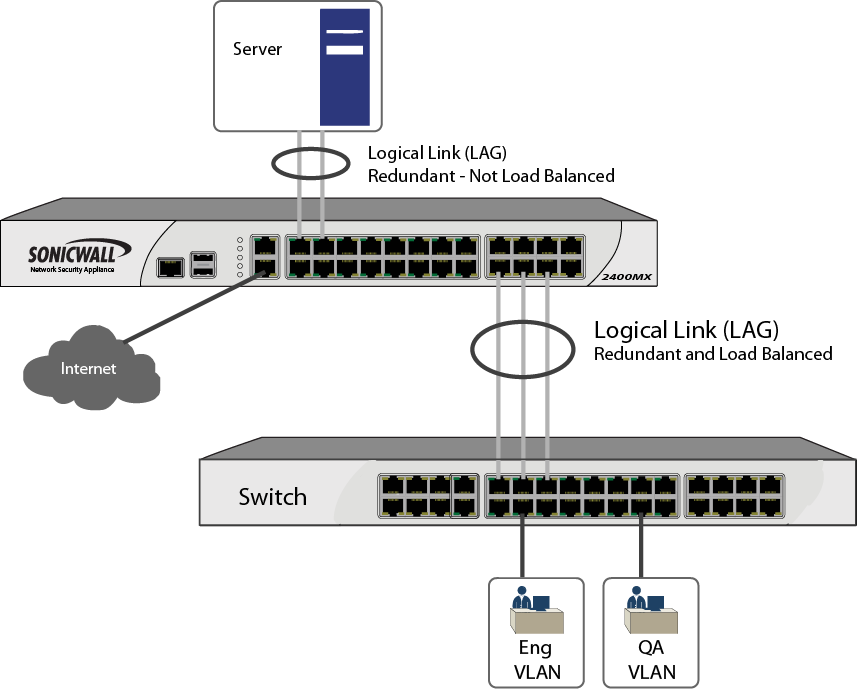Link Aggregation allows port redundancy and load balancing in Layer 2 networks. Load balancing is controlled by the hardware, based on source and destination MAC address pairs. The Switching > Link Aggregation page provides information and statistics, and allows configuration of interfaces for aggregation.
|
•
|
Firewall to Server – This is implemented by enabling Link Aggregation on ports within the same VLAN (same PortShield Group). This configuration allows port redundancy, but does not support load balancing in the Firewall-to-Server direction because of a hardware limitation.
|
|
•
|
Firewall to Switch – This is allowed by enabling Link Aggregation on VLAN trunk ports. Load balancing is automatically done by the hardware. The Firewall supports one load balancing algorithm based on source and destination MAC address pairs.
|
